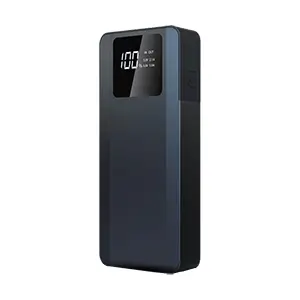Top 7 Mistakes People Make When Using a Portable Car Jump Starter (2025 Guide)
Introduction
Portable car jump starters have become one of the most essential emergency tools for drivers in 2025. They are compact, powerful, and allow you to restart a dead battery without needing another vehicle.
However, many drivers misuse them, leading to poor performance—or even damaging their vehicle. In this article, we’ll cover the top 7 mistakes people make when using a portable car jump starter, and share expert tips on how to avoid them.
1. Connecting the Clamps Incorrectly
One of the most common mistakes is reversing the clamps.
-
Red clamp → Positive (+) terminal
-
Black clamp → Negative (–) terminal or car chassis
⚠️ Wrong connections can cause sparks, damage the jump starter, or even harm your car’s electronics.
Tip: Always double-check polarity before pressing the power button.
2. Using a Low-Capacity Jump Starter for a Large Vehicle
A 600A unit might work for small sedans but won’t crank a large SUV or truck.
Mistake: Buying the cheapest option without checking specs.
Solution: Match the jump starter’s peak current to your engine size:
-
Sedans: 600–800A
-
SUVs: 1000–1500A
-
Trucks/Diesel: 2000A+
3. Forgetting to Keep the Jump Starter Charged
A jump starter that sits in your trunk for months without charging may fail when you need it most.
Tip: Recharge your jump starter every 2–3 months, even if you haven’t used it.
4. Trying to Use It in Extreme Weather Without Preparation
Lithium batteries can lose efficiency in very cold or hot conditions.
-
Cold weather: Keep the jump starter indoors or warm it before use.
-
Hot weather: Don’t leave it under direct sunlight for hours.
SEO insert: This is one of the key jump starter safety tips drivers often ignore.
5. Not Waiting Long Enough Between Attempts
If your car doesn’t start immediately, many people keep cranking the engine repeatedly.
Mistake: Overheating the jump starter and draining it too quickly.
Solution: Wait 30–60 seconds before trying again, and limit to 3 attempts.
6. Ignoring Built-In Safety Features
Modern portable car jump starters come with smart clamps, reverse polarity alarms, and LED indicators.
Mistake: Users rush and ignore these signals.
Solution: Always check the indicators before pressing “Start.”
7. Poor Storage and Maintenance
Leaving the device unprotected in the trunk can damage it over time.
Best practices:
-
Store in a dry, cool place
-
Use a carrying case
-
Avoid physical impacts
Bonus Tip: Always Read the Manual
Every jump starter model is slightly different. Skipping the manual means missing critical how to use a car jump starter safely instructions.
Conclusion
A portable car jump starter is an incredible tool—but only if you use it correctly. By avoiding these 7 common mistakes, you can extend the lifespan of your device, protect your car, and ensure you’re never stranded with a dead battery again.
👉 Want a reliable, safe, and powerful solution? Check out our latest portable jump starters here and be fully prepared for your next road trip.

